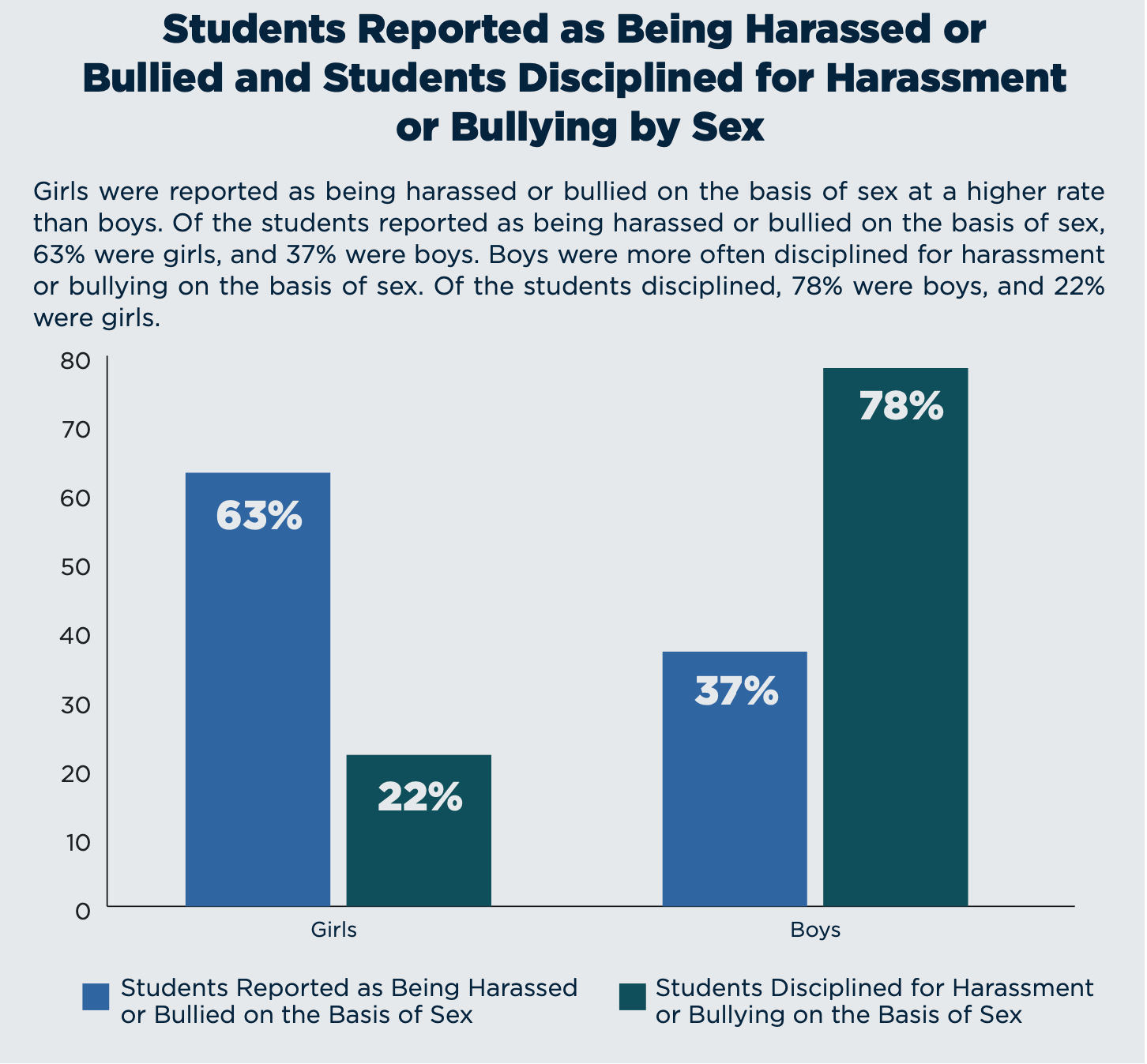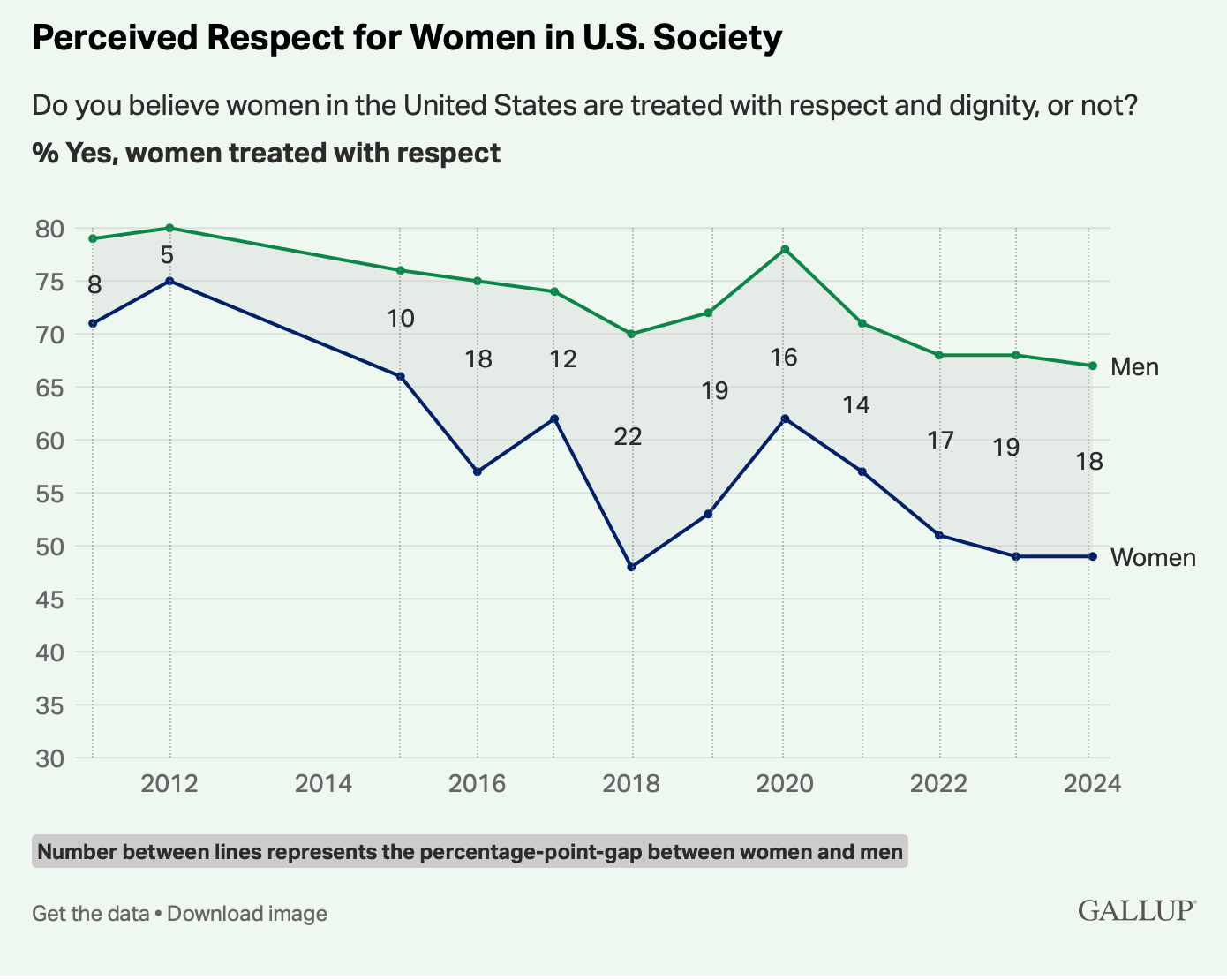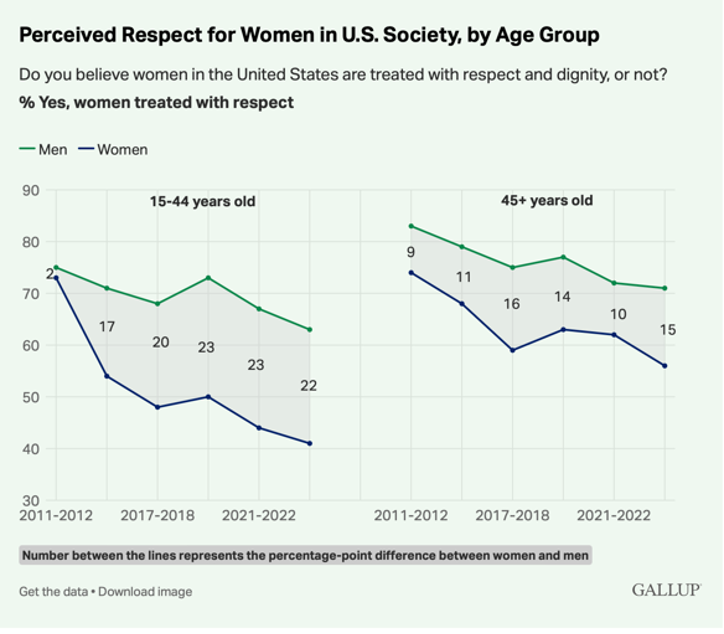6. Beyond Discipline: Students Harassing Teachers in Schools is about Ideology
Why do we fragment girls' and teachers' experiences of misogyny and harassment in schools?

Over the past few years, I have spoken at more than 70 high schools and colleges, and in that time, I have watched as boys and young men have become increasingly brazen in normalizing sexism under the guise of “debate,” “rationality,” “free speech” or a distorted sense of self-defense. It’s now fairly rote to hear students treating misogyny as if it’s just another perspective worth considering. I have heard boys talking about “natural” gender differences as a legitimate to make statements about women’s inferiority, to describe how women are oppressing men, and to assert women are manipulative by nature. On several occasions I’ve experienced boys and men, usually sitting together, ganging up on the fewer and fewer girls and women who are willing to openly challenge their assertions. Speaking up has long come with costs that have only increased over this period.
My exposure to students in lecture halls is nothing, however, compared to the day-to-day surge of anti-feminist hostility that teachers are witnessing and experiencing in classrooms around the world. For girls, sexist and sexualized hostility is a background constant online and in dating, but classroom aggression has notably increased during the past decade as tech-enabled abuse has expanded, making it easy, for instance, for even a primary school boy to turn more than 50 girls into porn and share their images in a matter of minutes.
Rising rates of emotional and mental distress illustrate how gendered hostility is affecting students, particularly girls and LGBTQIA+ students.
Source: U.S. Department of Education Office of Civil Rights
At the same time that all of this is going on, educators are reporting unprecedented levels of misogyny on campuses. Students, especially boys, are using demeaning language, using physical intimidation, and repeating sexist rhetoric. "Go back to the kitchen" and "Make me a sandwich" have now been swamped by "Your body is my choice." Aggressive behaviors include anything from boys making sexual moaning sounds as teachers speaks, being loud, disruptive, and physically menacing, commenting on women’s physical appearances, using slurs, and belittling women featured in classroom subject matter. Students are also increasingly repeating and justifying rape myths, citing misogynistic influencers. They’re drawing dicks on desks and school work (which, if you’re inclined towards Freud, is a clear indicator of castration fears.). In Australia, where classroom conflicts appear to have been studied more than in the U.S., educators explicitly cite Andrew Tate as boys’ reliable touchstone.
Girls, socialized in the same ways, also challenge teachers on this basis, often participating with boys, laughing at sexist jokes, and mockingly commenting on appearance but boys are leading the charge. In classrooms, boys are often specifically defensive about gender inequality lessons, often turning them into aggressive debates in which they use Manosphere claims: that pay gaps don’t exist, that women lie about rape, that feminism is bad for society, and that men are superior physically and intellectually.
As is the case with girls, sexualization is also being used against women educators in overt sexual harassment, stalking, reputation damaging commentary on teacher rating sites, and pornographic deepfakes.
"In the moment it feels like an attack and your body goes into fight or flight mode," explained one teacher, Hannah Duffus. “It's almost as if the authority that you hold as a teacher is revoked and they're not looking at you as a teacher, they're looking at you as a young woman." Her experience, prior to leaving teaching, included a student projecting porn onto a whiteboard behind her as she spoke. IN another case, a boy created a deep fake porn video of his teacher and then tried to extort money from her. (Click here for a detailed index of statistics related to the two prior paragraphs.)
Women faculty of color, particularly Black, Latina, and Asian American teachers and professors, experience higher levels of harassment and institutional abandonment. Younger women and those who openly identify as LGBTQ+ are more likely to become focal points for both student and parent hostility and women teachers at all boys' schools are particularly likely to be targeted.
What Happens When We Look at Students and Teachers Together? The Structural Connections
A few years ago, a boy at an all-boys school in my city was quietly expelled for taking upskirts of a woman teacher and sharing them with classmates. He promptly enrolled in another school, where girls who were now his classmates and teachers who would now instruct him were aware of his prior actions. Neither school seemed that bothered by how their management of the case might inform and affect other students or his teachers.
The message sent to boys was that sexual violations against a woman, even a teacher, result in minimal consequences for certain boys and men. This lesson is hardly new. It’s how abusive priests were moved from diocese to diocese, how rapists go from dating app to dating app, and how men who sexually harass and assault in the workplace move from department to department in corporations.
Other students and women teachers learn that adults and institutions tasked with their maintain boys’ innocence despite evidence and impact. It teaches them that cis, straight boys’, and men’s education, comfort, and futures are “neutral” states, prioritized over others’ education, safety, and justice. Over teacher’s authority and even jobs.
We know that respect for girls and women, hard fought for, is declining and we also know that most men either don’t think so, don’t care, or are actively involved in the decline. This Gallup finding illustrates the issue well:
Source: Gallup
The U.S. has one of the largest perceptual gender gap increases globally. Among people ages 15 to 44, the difference between boys’/men’s and girls'‘s/women’s perceptions of respect - more than 20-points - has grown the most rapidly.
Source: Gallup
Gen Z and younger men are more conservative when it comes to gender and less feminist than prior generations.
The Worst Part?
Girls and teachers are experiencing similar gendered harassment, but institutional responses fragment this reality, making it harder to name, address, or interrupt the larger patterns at work. Many schools continue to rely frame sexist behavior in terms of someone with seemingly less power harassing someone with more power but this tends to ignore the fact that students are not reacting to authority in general but to women’s authority specifically. Taking the view that this behavior is a generalized adolescent defiance turns their aggression into a gender and race-neutral developmental phase that, in fact, very few age out of.
Gendered cruelty isn’t about immaturity. It’s about how boys are learning about maturity and manhood at home, at school, on sports fields, in media, in places of worship.
As teachers, women are tasked with enforcing school discipline and neutrality while navigating the same sexist power dynamics their female students experience. Women are expected to manage the situation professionally, meaning by maintaining a posture of two-sided balance, emotional distance, objectivity, and control. Explicitly identifying with girls, validating their anger, or naming harassment as part of a broader system of patriarchy is almost always seen and even felt as biased, inappropriate, or even inflammatory. When they act neutrally, it can feel like a betrayal of students, overwhelmingly girls, who cannot count on the knowledge of shared experience, understanding, or institutional support. When they act with conviction—naming misogyny, validating its harms, or standing with girls on the basis of understanding their experiences—they risk being seen as unprofessional, biased, and emotionally unfit.
In schools, as elsewhere, women’s authority is dependent on disavowing their own gendered knowledge, leaving them trapped between the moral imperative to care and protect and the institutional demand to be “objective” and neutral.
As teachers, cis straight men typically avoid these particular conflicts. Masculinity insulates men from the demand to choose a side while the system allows their disengagement to be interpreted as objectivity. They are less likely to see themselves in the experiences of harassed girls and are more likely to identify with boys who might be “acting out.” Furthermore, men are less likely to be challenged by boys who are also more likely to recognize them as figures of respect and leadership. Because of this, male teachers can appear “neutral” while reinforcing what are essentially male dominance beliefs. As a result, unless they explicitly address misogyny as a structural force, men can invisibly and tacitly affirm the social order without overtly defending it, even if unintentionally. They can maintain alignment with boys by minimizing their behaviors (patriarchal dismissal) or disciplining them (confirming male authority) without few consequences.
For Black and LGBTQ men, the situation is more complex. Their authority is often undermined by racism, homophobia, and transphobia, which can make them more vulnerable to the same kinds of disrespect and challenge that women face. Yet, because they are still men, they may also be expected to perform authority in traditionally masculine ways. This double bind can isolate them further—subject to scrutiny and marginalization from students, colleagues, and administrators alike. While they may be more attuned to the experiences of marginalized students, they too are often constrained by the institutional imperative to conform to a narrow, dominant model of professionalism, leaving little room for solidarity or systemic critique.
The bind that women find themselves in turns even the most progressive teachers into enforcers of patriarchal norms by default. When teachers raise concerns about harassment, sexism, racism, or other problematic interpersonal exchanges, they become the problem in environments that are also gender hierarchical.
Boy’s Detachment from School is the Logical Outcome of Male Supremacy
Just about now, you may be thinking, but schools are dominated by women. Education is a “female-dominated space,” and it's causing a crisis in boys. The irony of this argument is that confronting misogyny in schools head-on is the most solid path to rethinking education and re-engaging boys.
The reason teaching is so gender-imbalanced today isn't that women gravitate towards teaching because of hormones or hearts. It’s because of male flight, the pattern of men abandoning fields and institutions because women enter them. Men were once the majority of teachers, but teaching lost value and prestige as women entered the sector and men decamped to richer pastures. As women filled the ranks, teacher pay steadily dropped.
The fact that more women cluster in teaching, therefore, confirms rather than negates men's structural and economic dominance. It reflects the devaluation of women and their work. In the education sector, women are paid less than men as teachers, not promoted as quickly, experience sexist parental biases, and workplace sexual and sexist harassment. They are are less likely to be in high level administration or serve as superintendents and they face higher obstacles when seeking positions in which systemic decisions about education policy are made.
So, it makes sense that boys are both more likely to detach from what they are taught and can see is are lower status, male flight, “feminized” environments. In addition to what I describe above, children also see women giving up their time, work, and earnings to volunteer, substitute teach, run PTAs, pick ups children, go on field trips, and generally show up in ways men still don’t. Children are socialized in education systems that, like other systems, depend on women’s unpaid and undervalued labor and reflect men decamping to avoid the stigma of living with women in charge.
I often hear something to the effect that in schools teachers have to provide boys with healthier masculinity alternatives than they are exposed to online but this approach doesn’t take into account that many, if not most, adults, if they are being honest, don’t believe that women, even mothers, have much to teach boys about how to be men. That’s a man’s job, even in schools.
This is why boys' classroom behavior isn't about behavior management but belief systems. Transformative change is only possible if adults agree that they want safer and more equitable educational environments for everyone. Including women and LGBTQ teachers.
Protest isn't only a matter of taking to the streets. It’s also daily, granular, and relational—the language we use, what we tolerate, what we teach our children to see as normal and acceptable. The everyday protest we need is one that insists that girls and women in schools are not collateral damage in boys' social development or men’s professional reputations. It also looks like demanding boys who deserve more than to be shaped by ideals of masculinity that conflate power with control and promote contempt for care, femininity, and women.






This article is so rich I am not sure what to restack.